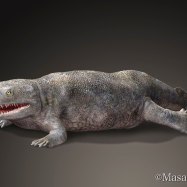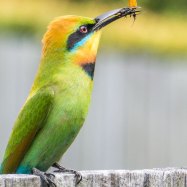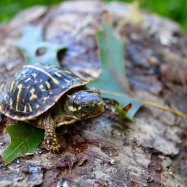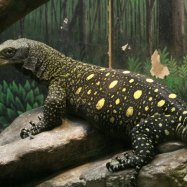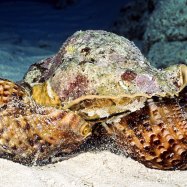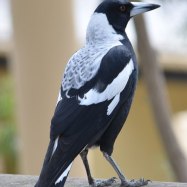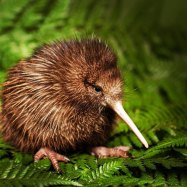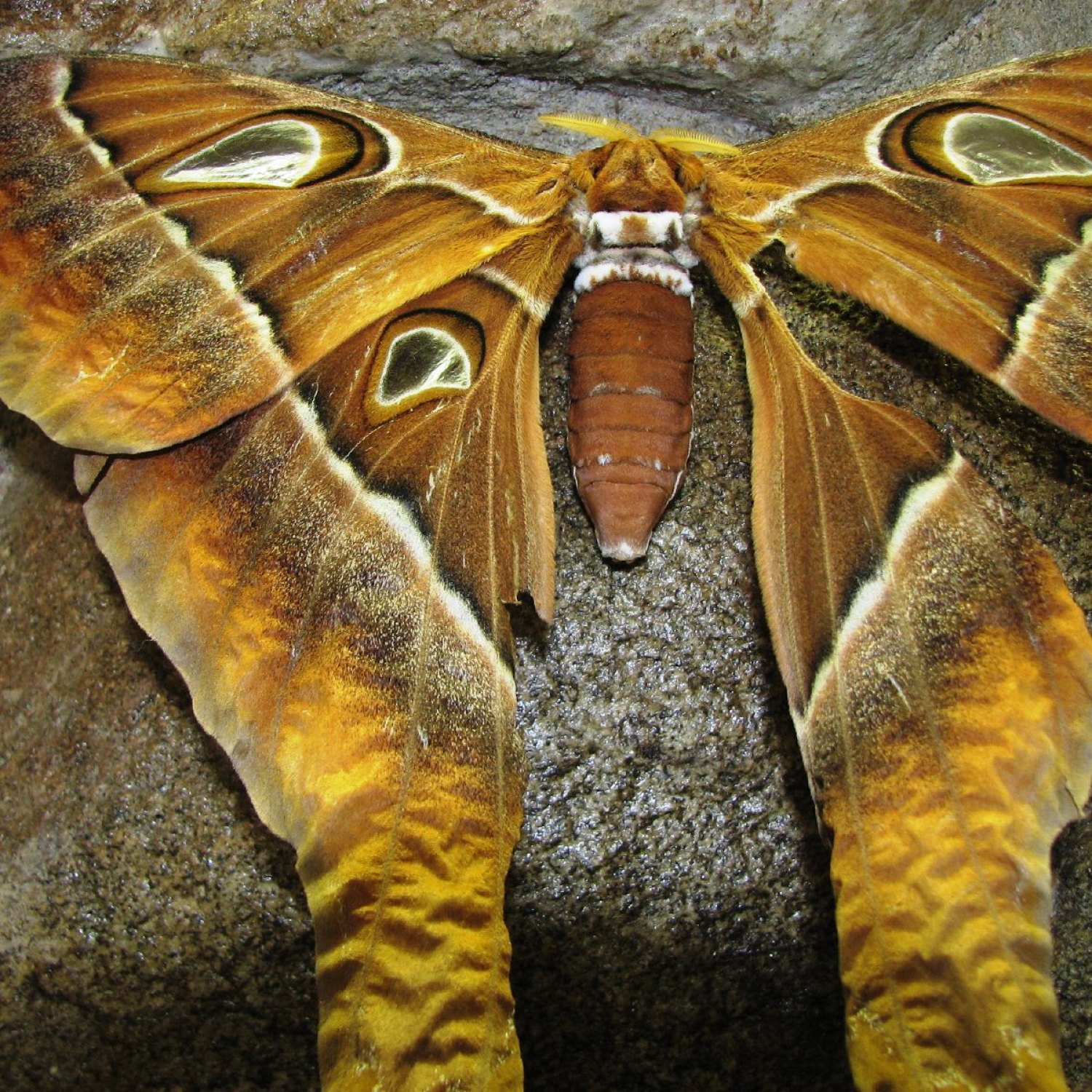
Hercules Moth
Female wingspan up to 27 cm, male wingspan up to 18 cm
The Hercules Moth, also known as Atlas Moth, is one of the largest moths in the world. With a wingspan of up to 27 cm for females and 18 cm for males, these majestic creatures can only be found in tropical rainforests. Their large and robust bodies belong to the Saturniidae family. These beautiful moths are a must-see for any nature lover! #HerculesMoth #AtlasMoth #TropicalRainforests
Animal Details Summary:
Common Name: Hercules Moth
Kingdom: Animalia
Habitat: Rainforests
The Magnificent and Mighty Hercules Moth
Nature has a way of surprising us with its astounding creations. From the tiniest insects to the largest mammals, each species has its unique characteristics that make them stand out. But one creature, in particular, captures the imagination and leaves a lasting impression - the Hercules Moth. With its impressive size, striking appearance, and fascinating behaviors, this moth truly lives up to its heroic name Hercules Moth.The Basics: What is a Hercules Moth?
The Hercules Moth, scientifically known as Coscinocera hercules, is a member of the Saturniidae family, also known as the giant silk moths. It is one of the largest moths in the world, with a wingspan of up to 27 cm for females and 18 cm for males. Its name is derived from the Greek god, Hercules, known for his strength and power, and rightly so, as this moth is a true powerhouse in the insect world.Physical Characteristics
The Hercules Moth is truly a sight to behold. Its body is large and robust, covered in soft, feathery hairs, giving it a plush appearance. The coloration of this moth varies depending on its gender. Males are mostly brown with intricate yellow patterns on their wings, while females are larger and have reddish-brown wings with white lines.But it's not just their size and appearance that make them unique. When threatened, the wings of the Hercules Moth unfold to reveal a pair of bright red and black eyespots, which can startle potential predators Horse Mackerel. This is a form of aposematic coloration, used by the moth to mimic the appearance of a larger, more dangerous animal, making it less attractive prey.
Habitat and Distribution
The Hercules Moth is endemic to the tropical rainforests of Northern Australia, Papua New Guinea, and Indonesia. It can also be found in other parts of Australia, such as Queensland and the Northern Territory, where its preferred habitat is dense rainforests with a high humidity level. These moths are nocturnal and are rarely seen during the day as they spend most of their time resting on tree trunks.Diet and Feeding Habits
The Hercules Moth is a herbivore, and its diet mainly consists of Eucalyptus leaves and other rainforest vegetation. As caterpillars, they have a voracious appetite and can eat up to 160 square centimeters of leaves in just one night. Impressive, considering that their size at this stage is only about 5-6 cm.Life Cycle and Behaviors
The life cycle of the Hercules Moth is nothing short of a miracle. It goes through a complete metamorphosis, just like any other moth or butterfly, but with a few unique twists. The process starts with the female laying about 50-100 eggs on the underside of leaves, which hatch after about two weeks. The caterpillars, known as "satin caterpillars" due to their smooth and shiny appearance, then begin to feed on the leaves. As they grow, they molt several times and go through five stages before reaching maturity.What sets the Hercules Moth apart from other insects is their cocoon. Female moths spin large, silken cocoons that can reach up to 12 cm in length and 4 cm in diameter, making them one of the largest cocoons in the world. The cocoon is usually attached to a tree trunk or hanging from a branch, providing protection for the caterpillar as it transforms into a moth.
Survival Tactics
The Hercules Moth has developed various strategies to ensure its survival in the harsh rainforest environment. One of these strategies is their camouflage. The brown coloration of the male moth helps it blend in with dead leaves, while the female's reddish color helps her blend in with the bark of trees. This helps them avoid being detected by predators during the day.When discovered by a predator, such as birds or reptiles, the Hercules Moth has one more trick up its sleeve - they release a foul-smelling liquid from their thorax, which acts as a deterrent and allows them to escape. This liquid is believed to be a defense mechanism against ants, which often fight over food in the rainforest.
Conservation and Threats
Like many other species, the Hercules Moth faces threats to its survival due to human activities and environmental changes. Deforestation, mostly for agriculture and urbanization, has led to the destruction of their natural habitat. As a result, their population has decreased in some areas, making them a vulnerable species.But all hope is not lost. Thanks to conservation efforts and laws protecting their habitats, the population of Hercules Moths has begun to show signs of recovery in certain areas, particularly in Australia.
Fun Facts about the Hercules Moth
- Female Hercules Moths can weigh up to 30 grams, making them one of the heaviest moths in the world.- The name "Hercules" was given to this moth by the naturalist, Frederick Moore, who first described the species in his book, "Lepidoptera of Ceylon."
- The Hercules Moth has a unique way of escaping its cocoon - they use their sharp spiny legs to cut a hole and squeeze out.
- These moths don't have functional mouthparts, meaning they can't eat or drink and rely solely on stored fat reserves to survive.
- The males, unlike other moths, have comb-like antennae, which they use to locate their female counterparts by picking up their pheromones.
In Conclusion
The Hercules Moth may not be the most well-known or glamorous creature in the animal kingdom, but it certainly is one of the most fascinating. From their incredible size and appearance to their unique survival tactics, everything about them is awe-inspiring. It's a reminder that even the smallest and seemingly insignificant of creatures can be a true wonder of nature.

Hercules Moth
Animal Details Hercules Moth - Scientific Name: Coscinocera hercules
- Category: Animals H
- Scientific Name: Coscinocera hercules
- Common Name: Hercules Moth
- Kingdom: Animalia
- Phylum: Arthropoda
- Class: Insecta
- Order: Lepidoptera
- Family: Saturniidae
- Habitat: Rainforests
- Feeding Method: Herbivore
- Geographical Distribution: Northern Australia, Papua New Guinea, Indonesia
- Country of Origin: Australia
- Location: Tropical rainforests
- Animal Coloration: Varies between males and females; males are brown with yellow patterns, females are larger and have reddish-brown wings
- Body Shape: Large and robust
- Length: Female wingspan up to 27 cm, male wingspan up to 18 cm
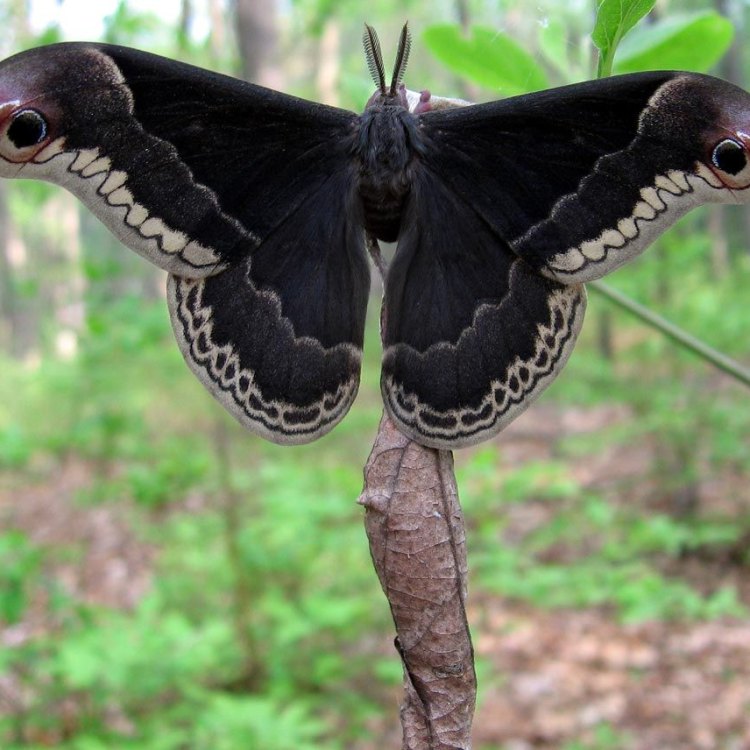
Hercules Moth
- Adult Size: Large
- Average Lifespan: 2-4 weeks
- Reproduction: Sexual
- Reproductive Behavior: Males release pheromones to attract females
- Sound or Call: No distinct sound or call
- Migration Pattern: Non-migratory
- Social Groups: Solitary
- Behavior: Nocturnal
- Threats: Habitat loss due to deforestation, climate change
- Conservation Status: Not evaluated
- Impact on Ecosystem: Pollination of plants
- Human Use: None
- Distinctive Features: Large size, impressive wingspan
- Interesting Facts: The Hercules Moth is one of the largest moth species in the world. The female Hercules Moth has the largest wingspan of any moth. The caterpillars of the Hercules Moth are also large and have spines.
- Predator: Birds, bats, reptiles

Coscinocera hercules
The Fascinating World of the Hercules Moth: Discovering Nature's Giant
In the vast and diverse world of insects, there are some creatures that stand out for their size and beauty. One such majestic being is the Hercules Moth (Coscinocera hercules), a giant moth found in the rainforests of northern Australia, Papua New Guinea, and the surrounding islands. From its impressive size to its unique behaviors, the Hercules Moth is truly a wonder of nature. In this article, we will delve into the world of this magnificent insect and discover its distinctive features, behaviors, and impact on the ecosystem PeaceOfAnimals.Com.The Giant Among Moths
The first thing that catches the eye about the Hercules Moth is its size. This species is considered one of the largest moths in the world, with an adult size ranging from 20 to 27 centimeters. To put it into perspective, that's about the length of a small ruler or the size of a standard dessert plate. The wingspan of this moth can reach up to a whopping 27 centimeters, making it stand out among other moth species.Despite its massive size, the Hercules Moth is surprisingly lightweight. The moth's body is covered in thick fur-like scales, giving it a fluffy appearance. It also helps the moth to stay warm in cooler temperatures.
A Short but Magnificent Life
Like many insects, the Hercules Moth has a relatively short lifespan, lasting only two to four weeks as an adult. In contrast, their larval stage can last up to two years Honey Bee. As adults, their sole purpose is to mate and reproduce before their short life comes to an end.A Sexual Cycle
The Hercules Moth follows a sexual reproductive behavior, where males release pheromones to attract females. This scent, known as an olfactory cue, is a chemical signal that helps female moths locate potential mates. Interestingly, male Hercules Moths have a much stronger sense of smell than females, making them more successful in finding a mate.Another unique aspect of their sexual behavior is that the male Hercules Moth has a specific pheromone signature that is only attractive to the female species. This behavior helps them avoid mating with other moth species, ensuring their survival and reproduction.
No Distinct Sound or Call
In contrast to many other insect species, the Hercules Moth does not produce any distinct sound or call. These moths primarily communicate through their pheromones, making them silent but efficient in seeking out mates.Non-Migratory and Solitary
The Hercules Moth is a non-migratory species, meaning they do not undertake long-distance seasonal journeys like other animals. They spend their entire life in the same rainforest where they were born, living alone in the canopy of trees. These solitary creatures only come together during their brief reproductive phase, where they find a mate and then go their separate ways.A Creature of the Night
The Hercules Moth is a nocturnal species, meaning they are active at night. They rest during the day to conserve energy and emerge at night in search of food and mates. This behavior also helps them avoid predators, as most of their natural enemies, such as birds, bats, and reptiles, are diurnal (active during the daytime).Threats and Conservation Status
Despite its impressive size and unique features, the Hercules Moth is not immune to the threats of the environment. One of the main challenges facing this species is habitat loss due to deforestation. As rainforests shrink or get destroyed due to human activities, these moths also lose their homes, food sources, and breeding grounds.Climate change is another significant threat to the Hercules Moth and other rainforest species. As temperatures rise, the delicate balance of the ecosystem is disrupted, affecting the growth and survival of these moths and other organisms.
Currently, the conservation status of the Hercules Moth is not evaluated. However, with the increasing threats to their habitat and survival, conservation efforts are crucial to protecting this beautiful creature.
A Significant Pollinator
While the primary focus has been on the size and beauty of the Hercules Moth, this species also plays a vital role in the ecosystem as a pollinator. As they travel from flower to flower in search of food, they inadvertently transfer pollen, aiding in the reproduction of plants. This process is crucial for maintaining the diversity and balance of the rainforest ecosystem.No Human Use, Just Appreciation
Unlike other insect species, the Hercules Moth does not have any value in terms of human use. They are not used for any commercial purposes, nor are they considered pests. However, their impressive size and unique features make them a subject of fascination and wonder for researchers, wildlife enthusiasts, and nature lovers alike.Distinctive Features and Interesting Facts
Apart from their large size, the Hercules Moth has many other distinctive features and interesting facts that make them stand out in the world of insects. The female Hercules Moth, in particular, has the largest wingspan of any moth, making it a rare and awe-inspiring sight in nature. This species is also known for its impressive caterpillars, which are just as large as its adult form and have spines on their bodies as a defense mechanism against predators.In Conclusion
In the complex and diverse world of insects, the Hercules Moth stands out for its immense size, distinctive features, and unique behaviors. From its short but magnificent life to its role in pollinating plants, this species is an essential part of the rainforest ecosystem. However, like many other species, the Hercules Moth also faces threats from human activities and climate change. It is our responsibility to protect and conserve this magnificent creature for future generations to enjoy and appreciate.

The Magnificent and Mighty Hercules Moth
Disclaimer: The content provided is for informational purposes only. We cannot guarantee the accuracy of the information on this page 100%. All information provided here may change without prior notice.

